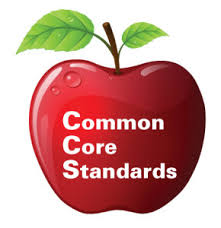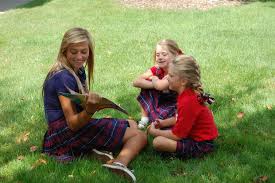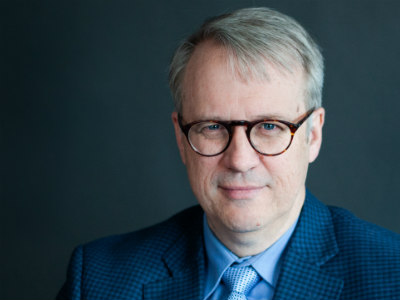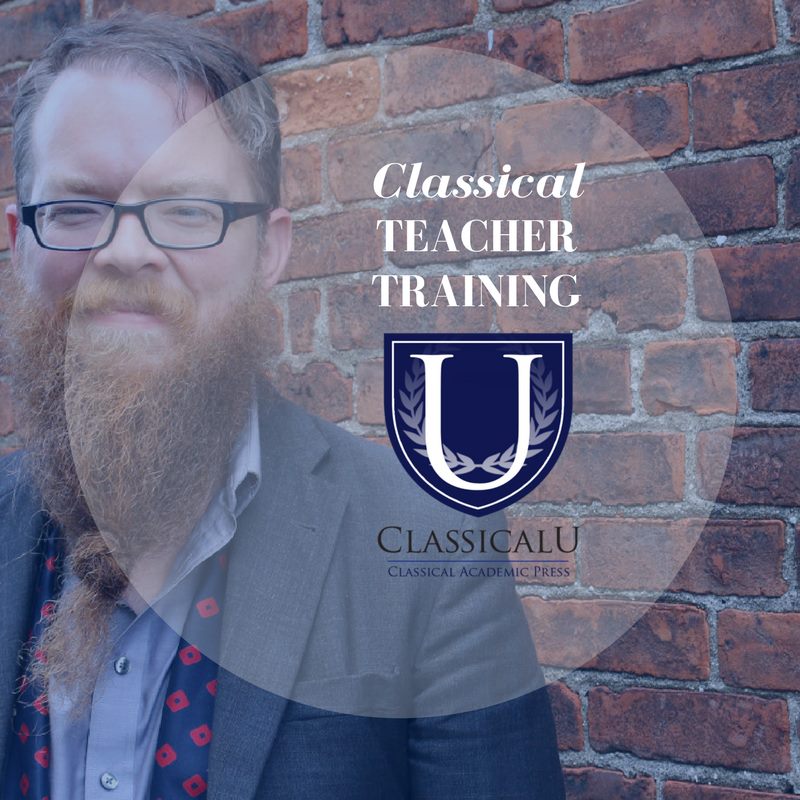by Christopher Perrin, PhD | Jun 3, 2013 | Videos
Here is a seminar featuring some pedagogical training I frequently give to schools and co-ops. I hope this is helpful to those seeking to learn more about classical education. In this video I present eight teaching principles that come down to us from the classical tradition: 1) festinal lente (make haste slowly); multum non multa (much not many); repetitio mater memoriae (repetition the mother of memory); songs and chants; embodied education; educational virtues, wonder and curiosity; schole and contemplation.

by Christopher Perrin, PhD | May 6, 2015 | Articles
As a classical educator and consultant to classical schools for about 20 years now, I have often been amused and sometimes gratified by the ways scientific research rediscovers what classical educators have known (or at least believed) for centuries. For example, “studies now show” that the study of Latin will help you with your English vocabulary and verbal section of the SAT or GRE (classics students do better on the GRE verbal section that English students). “Research also shows” that multi-modal instruction (using the pathways of the eye, ear and body) enhance learning and memory. The classical pedagogy for younger students that involves chanting, singing, hand and body motions, all while viewing charts, song lyrics or diagrams turns out to be… multi-modal. Similar things could be said about Socratic teaching (collaborative learning) and having students actually teach other students (docendo discimus—by teaching we learn).
Most recently, “research now shows” that play actually enhances the way young students learn (NPR piece: Scientists Say Child’s Play Helps Build a Better Brain). Sergio Pellis from the University of Lethbridge in Alberta says, “The experience of play changes the connections of the neurons at the front end of your brain… and without play experience those neurons aren’t changed.”
I quote directly from the NPR piece:
“Whether it’s rough-and-tumble play or two kids deciding to build a sand castle together, the kids themselves have to negotiate, well, what are we going to do in this game? What are the rules we are going to follow?” Pellis says. The brain builds new circuits in the prefrontal cortex to help it navigate these complex social interactions, he says.
Another scholar and researcher from Cambridge advocates (along with over 100 additional English experts) that formal schooling should delayed from age four to seven. David Whitebread of Cambridge writes:
In England children now start formal schooling, and the formal teaching of literacy and numeracy at the age of four. A recent letter signed by around 130 early childhood education experts, including myself, published in the Daily Telegraph (11 Sept 2013) advocated an extension of informal, play-based pre-school provision and a delay to the start of formal ‘schooling’ in England from the current effective start until the age of seven (in line with a number of other European countries who currently have higher levels of academic achievement and child well-being).
Whitebread stresses that this conclusion is based on numerous studies:
There are several strands of evidence which all point towards the importance of play in young children’s development, and the value of an extended period of playful learning before the start of formal schooling. These arise from anthropological, psychological, neuroscientific and educational studies.
He grounds these conclusion in neuroscientific, psychological studies:
Neuroscientific studies have shown that playful activity leads to synaptic growth, particularly in the frontal cortex, the part of the brain responsible for all the uniquely human higher mental functions.
I am gladdened and gratified (and yes, slightly amused) by these reports. Often scientific study confirms the conventional wisdom gained by accrued human experience. We humans have been working at training up our young for a while now, and have generally considered it a very important enterprise. So play is a critical part of the education of young children—neuroscience apparently confirms this. But it is worth pausing and asking–who said this first? Classical educators (and to be fair, scores of progressive educators) have acknowledged play as a key to the learning of young children. Children re-enact on the playground what they learn in the classroom. Teach the civil war to 6th grade boys (or the Peloponnesian War) and what do you get at recess? And how many of us have found our children “playing school or homechool” in the back yard on a summer day?
The Greeks would have the boys wrestle regularly outside as part of their education (I will pass over the fact that they did this the nude). They wrestled outside of class, and no doubt they wrestled in class with some noteworthy clarity (with tunics on). They wrestled outside hand-to-hand, then inside head-to-head. Ask any third grade teacher: Are students better prepared for a math lesson before or after recess? Recess remains in our schools (and doesn’t even need such a name in our homeschools) 2500 years after the Greeks integrated it into their curriculum.
So who said it first? It was likely Plato who first recognized the educational value of play. In Book VII of Plato’s Republic, Socrates suggests that play is where education should begin: “Don’t use force in training the children in the studies, but rather play. In that way you can better discern what each is naturally directed towards” (537a).
In the same context, Socrates goes on to say that forced or compulsory learning is fleeting:
“Bodily exercise, when compulsory, does no harm to the body; but knowledge which is acquired under compulsion obtains no hold on the mind.” (536e)
We are very familiar with the cram-pass-forget cycle of American education, in which we “learned” material for a test, only to forget it a day or two afterwards. Plato says that such learning is a farce which would obtain “no hold on the mind.” Play, however, is the natural way young children learn, what they want to truly embody and possess knowledge. To the Greeks, there is a linguistic relationship here too. The Greek word pazein (to play) is related to the word for child, pais. It is preserved in a distant way in our phrase child’s play. There is a kind of play innate to a child that makes it a play proper to a child, even part of what it means to be a child. A child plays. A child learns as he plays. Much of his learning, from one perspective, is child’s play.
Can this insight be distorted? Yes it can, and often is. If we extend this insight about how children learn too far, we have children deciding at every juncture what and when to study, and we adults will ask nothing of them—for that would be “force and compulsion.” We must not forget that the purpose of play is to learn how to live in the drama of a real life, when sticks will be exchanged for swords, and the puddle for a roiling sea. The little girl who is a fairy will one day be running a household or a hotel.
This means that play is preparation and that play is in fact a serious matter. While children must be given a wide swath of freedom (recess should have as few rules as possible, and I think sticks must be legal), they also must be directed and they must be taught. In other words, the classroom and the playground work hand-in-hand. The teacher teaches, the students run outside, their heads full of Latin words, lines of poetry, tales of ships, battles and heroic feats of all kinds; the play back the lessons of the classroom in unpredictable, creative, delightful ways. They learn again, as only a child at play can.
Can play be imported into the classroom? Yes, in wise ways appropriate to the classroom—even as teaching can be taken outside, in wise ways. We might say, to change vocabulary, that there is way of weaving together informal and formal ways of learning. The wise teacher will know how to this to the best advantage, not permitting her classroom to become a playground, nor the playground a classroom.
When you look at a child to you see a pais, made to play (pazein)? To switch to Latin, when you see children, do you see liberi—the free ones? Do we teach them as free spirits? Could we benefit from the mindset of the Romans who called their school for young children a ludus—also their word for child’s play?
by Christopher Perrin, PhD | Mar 3, 2015 | Articles
Gilbert Highet wrote a book in 1950 called The Art of Teaching. Highet was a well-regarded teacher of classics at Columbia University (a colleague with Jacques Barzun) and he knew very well that the teaching profession was rapidly being transformed into a science by his fellows at the nearby Columbia Teacher’s College.
The Columbia Teacher’s College has been the single most influential institution for the advancement of progressive education—I think few would dispute this. In 1950, however, Highet disputed one central claim set forth by progressive educators everywhere—the claim that education should be studied, assessed, advanced and practiced as a science. There were reasons for the ascendency of this view of things.
Much progress had been made in science and technology by 1950. The car had long since revolutionized society (America in particular) and the airplane was coming into its own—with the advent of jets. In just 19 years we would land a man on the moon. The social sciences were also growing rapidly and growing in respect. Since World War I, psychological testing was being used to assess aptitudes and predict what kinds of occupations and jobs would be fitting for hundreds of thousands of human beings.
Perhaps, using the scientific method and the insights of the new social sciences, we could indeed transform education into a predictable, controlled process that would ensure our preferred results. Perhaps we could apply tested techniques that would “socially engineer” the kinds of citizens our growing nation needed. Just maybe we were on the cusp of a revolution in education, much like we had experienced in transportation and industry. It certainly seemed worth a try—
Still, to the contrary, Highet argued that education is an art and not a science:
It seems to me various dangerous to apply the aims and methods of science to human beings as individuals, although a statistical principle can often be used to explain their behavior in large groups and a scientific diagnosis of their physical structure is always valuable. But a “scientific” relationship between human beings is bound to be inadequate and perhaps distorted. Of course it is necessary for any teacher to be orderly in planning his work and precise in his dealing with facts. But that does not make his teaching “scientific.” Teaching involves emotions, which cannot be systematically appraised and employed, and human values, which are outside the grasp of science. A “scientifically” brought up child would be a pitiable monster. A “scientific” marriage would be only a thin and crippled version of a true marriage. A “scientific” friendship would be as cold as a chess problem. “Scientific” teaching, even of scientific subjects, will be inadequate as long as both teachers and pupils are human beings. Teaching is not like inducing a chemical reaction: it is much more like painting a picture or making a piece of music, or on a lower level like planting a garden or writing a friendly letter. You must throw your heart into it, you must realize that it cannot all be done by formulas, or you will spoil your work, and your pupils, and your self.
Note how Highet does give science its due respect and commendation. Science does inform education in many rewarding ways, though teaching itself is not a science. This distinction is important and where the controversy lies. Classical educators should pay attention to much that scientific inquiry discovers that is relevant to education. Neurology, educational psychology and educational sociology can provide us with insights to how, and when, and in what setting we teach. We can learn much from scientific research that informs (even enriches) our teaching. Still, teaching itself is a human art, governed primarily by our anthropology, our view of what human beings are and their purpose. Christians in the classical tradition, will view humans as enfleshed and created souls, that while having some things in common with animals, transcend the animal kingdom.
Thus Highet essentially argues that “scientific teaching” is a kind of a category mistake. Humans are not raw material (like metal and rock) to be fashioned into products. Nor are humans mere animals that should thus be best trained by behavioral conditioning (though we should not deny that such conditioning can in some ways change behavior—we just are hesitant to call modified behavior education). Our inherited vocabulary for education hint at uniquely human aspects of teaching. The traditional approach to education sought to fully “humanize” people by teaching “the humanities.” The traditional goals of education were wisdom, eloquence and virtue—traits that no animal could ever possess.
James K. A. Smith has said (in Desiring the Kingdom) that every pedagogy assumes and anthropology. Some 65 years ago Gilbert Highet said much the same thing. Is education an art or a science? Much depends on preceding questions about the nature of humanity itself.

by Christopher Perrin, PhD | Nov 4, 2014 | Articles
When I first heard the Common Core discussed in a news report, I had a schizophrenic reaction. Being an ardent advocate for the classical tradition of education, I responded positively to its captivating name. Classical educators love and support the idea that there is a “core curriculum” –-a core (even a canon) of great books, great ideas and great arts that should be studied. We also support the notion that these great ideas should be the common study and treasure of the entire nation. Much of this thinking is embedded in E.D. Hirsh’s Core Knowledge curricula, for example. But then I had another reaction: what I heard of this Common Core, turned out to be nothing like the classical tradition, but rather something quite uncommon to it. As I read and listened, it became clear that the Common Core Standards (CCS) were progressive education theory with a classical name. The name connotes or suggests something that it is not—at least to anyone familiar with traditional and classical education. (more…)
by Christopher Perrin, PhD | Jul 10, 2014 | Articles

Have you come across this phrase before? It has intrigued me for years. I like the alliterative quality, I like the hints of other words (doctrine from docendo; discipline from discimus). By teaching we learn—really? Surely, we have to learn first then, teach—we get degrees in college so we can teach—right?
Here we encounter an educational paradox. The way to become a great teacher is to remain a student; the way to become a great student is to teach. This Latin motto has been around for centuries and is the motto of colleges and training centers in many places—just Google it (Central Washington College, University of Defense—Czech Republic). If this is a bit of perennial wisdom, why is it so rarely implemented in our schools? Why don’t the upper school students spend some time teaching the younger students? Why don’t students teach occasional sections in their own classes? Several good things can result: teachers get a small break (but then they should observe and assess the teaching of their students); other students will enjoy the change; the presenting student will be on her toes (for it will be a performance of sorts); the presenting student will apparently learn more by having to teach. This seems to me a win-win-win.
Of course, some schools and homeschools are engaged in docendo discimus. Schools that cycle through history, repeating the teaching of historical periods in later grades, can have older students come down to the younger grades to teach history. If the ninth graders and fourth graders are studying medieval history—you can imagine the opportunity. Certainly older students can teach younger students Latin, grammar and mathematics, under the supervision of the class teacher. Students can check homework, meet one-on-one to coach younger students, and occasionally present before an entire class. Older students can even help reinforce reading skills by reviewing letter, phonemes, and words; many schools have “reading buddies”—older students who pair off with younger students and read aloud to younger readers weekly.
This pedagogy harkens back to the traditional one-room schoolhouse on the prairie. With a diverse group of students of varying ages all in one room, the teachers naturally employed older students as junior teachers who would teach younger students, while the teacher would work with another group. As the younger students matured and aged, they naturally would begin to teach those students younger than they. By teaching, they learned.
Now what is a homeschool but a kind of one-room schoolhouse? Yet some homeschool parents (I think because of their own educations) find it hard to imagine that their older students should teach much or at all. Naturally, as parents and teachers, we should be focused on the quality of teaching to any student—and perhaps having a student teach a student diminishes quality. If so, which student loses quality? Certainly not the student teaching—not if the maxim holds true—for if he teaches he learns. If the younger student receiving the teaching of an older one is not taught so well, then we should have him teach another still younger, as soon as possible. Even the younger ones aspire to this, do they not? How often do the seven-year olds instruct the five-year olds at play or during recess? How often do young girls line up their dolls and teach?










